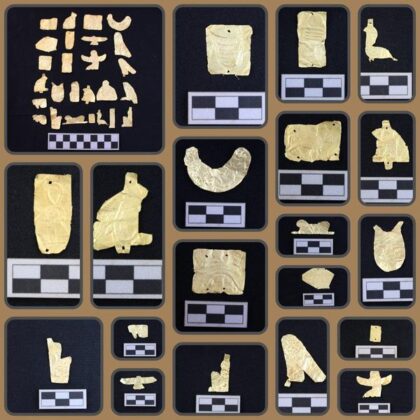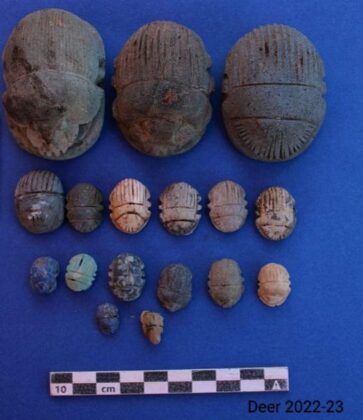Egypt: The Ministry of Tourism and Antiquities has revealed that in a recent Archaeological Mission carried out in New Damietta, the archaeologists discovered a group of tombs in the monastery’s traces during their work on the site.
As per the recent updates, the information was shared on the official social media page of the Ministry of Tourism and Antiquities yesterday, December 20th.
The Egyptian archaeological mission of the Supreme Council for Archaeology was working at the monastery archaeology in New Damietta. At the same time, they succeeded in discovering 20 cemeteries dating back to the late period while completing the excavation work.
Furthermore, the General Secretary of the Supreme Council for Archaeology, Mustafa Waziri, stated on the occasion that the discovery of the tombs is an important scientific and archaeological achievement for the nation, which would reflect and write the history of Damietta Governorate in golden words.
On his part, General Secretary Waziri added information about the tombs that were found and conveyed that the discovered graves approximately ranged between milk brick Graves and simple digs.
In addition, Ayman Ashmawi, the head of the Egyptian archaeology sector at the Supreme Council of Archaeology, cited that brick tombs and milk tombs probably date back to the Equinox era, specifically the family 26, as its architectural planning was a common and familiar model in the late age, as well as the technical features and pottery discovered inside for her.
The head of the Central Administration for Marine Facility and Sinai Professor Qutb Fawzi, accompanied by the head of the archaeological mission, said that the mission also succeeded in uncovering great foils that covered the remains of human burial.
The discovered tombs and graves were related to incarnating the idols of Isis, Wahat, and Bastet, as well as the incarnation of the eye of Horus, Hamia (Ogat), and so Horus. Falcon with wings, plus many Funeral Ornaments of various shapes and sizes and stones such as barrels, grandfather’s pillar, headrest, Amon feathers, and many other idols including Isis, Neptis, Jhuti, and Taarte.
In his statement, the head of the archaeological department of Egypt added that miniature samples of cannibal’s vessels for preserving the deceased’s intestines during the embossing operation, and statues of the Four Sons of Horoscope were found.
In the end, Mr Reda Saleh, Director of Damietta Archaeology Region, added that the mission is continuing its excavation work on the site to uncover the secrets of the Tel Deir coward.
The Director of the Damietta region said they are still looking forward to discovering new findings in the excavation area.
He further noted that the archaeologist is confirming that there is a good chance of the site still holding between its layers of sand.
He stated that the mission had succeeded in the previous seasons in revealing many habits T and burial roads of civilizations. The Tel-Dir witnessed the successor on Egypt’s land in Greek-Roman times.






